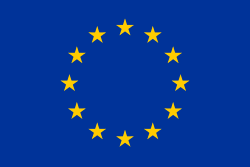Kombinerade nomenklaturen
Den kombinerade nomenklaturen (KN) är en gemensam katalog inom Europeiska unionen för att klassificera varor. Den består av upp till åtta siffror, som används bland annat för den gemensamma tulltaxan och för utrikeshandelsstatistik.[1]
Den kombinerade nomenklaturen infördes den 1 januari 1988 genom en förordning som antogs av Europeiska unionens råd.[2] De första stegen mot att införa en gemensam nomenklatur togs dock redan på 1960-talet i samband med inrättandet av tullunionen inom Europeiska gemenskaperna.[3]
Se även
Referenser
Noter
- ^ SCB: Kombinerade nomenklaturen (KN)
- ^ RÅDETS FÖRORDNING (EEG) nr 2658/87 av den 23 juli 1987 om tulltaxe- och statistiknomenklaturen och om Gemensamma tulltaxan
- ^ REGULATION (EEC) No 97/69 OF THE COUNCIL of 16 January 1969 on measures to be taken for uniform application of the nomenclature of the Common Customs Tariff
| EU-portalen – temasidan för Europeiska unionen på svenskspråkiga Wikipedia. |
Media som används på denna webbplats
The Flag of Europe is the flag and emblem of the European Union (EU) and Council of Europe (CoE). It consists of a circle of 12 golden (yellow) stars on a blue background. It was created in 1955 by the CoE and adopted by the EU, then the European Communities, in the 1980s.
The CoE and EU are distinct in membership and nature. The CoE is a 47-member international organisation dealing with human rights and rule of law, while the EU is a quasi-federal union of 27 states focused on economic integration and political cooperation. Today, the flag is mostly associated with the latter.
It was the intention of the CoE that the flag should come to represent Europe as a whole, and since its adoption the membership of the CoE covers nearly the entire continent. This is why the EU adopted the same flag. The flag has been used to represent Europe in sporting events and as a pro-democracy banner outside the Union.